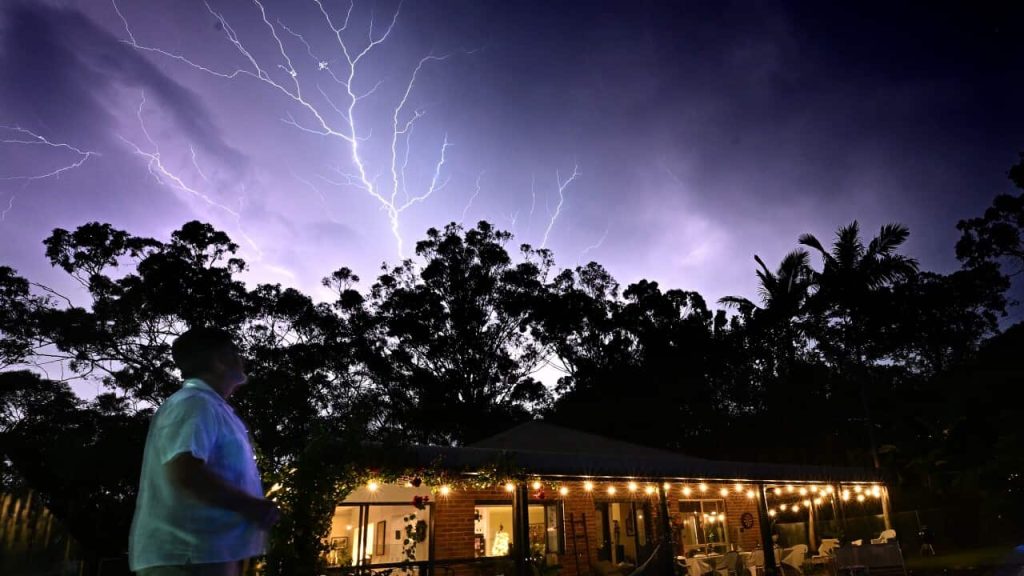Severe Thunderstorms Expected Across Australia: How to Prepare
As Weatherzone predicts stormy weather across large parts of Australia through the middle of November, it’s crucial to stay informed and prepared for the potential severe weather conditions ahead. From Sydney to Brisbane and Canberra, various regions are at risk of experiencing severe thunderstorms, with Western Australia and northern parts of the country also expected to be impacted by midweek.
### Key Points
– Weatherzone is predicting stormy weather across large parts of Australia through the middle of November.
– Sydney, Brisbane, and Canberra are at risk of severe thunderstorms on Wednesday.
– Western Australia and northern regions are expected to experience severe weather from midweek onwards.
Thunderstorms are forecasted to affect central and eastern Australia in the coming days, with the Bureau of Meteorology (BoM) attributing these severe weather conditions to low-pressure troughs drawing in clouds and generating moisture across the continent. Weatherzone forecasts indicate that stormy weather will persist throughout this week and likely continue into next week.
### Where Will it Storm?
By the middle of the week, the storm area is expected to expand, becoming widespread across central Australia and the east, according to BoM. Central Australia, south-east Queensland, and north-east New South Wales are at the highest risk of heavy rain, large hail, and damaging winds on Tuesday and Wednesday. Sydney, Brisbane, and Canberra are specifically highlighted as areas at risk of severe thunderstorms on Wednesday.
The storms and showers are anticipated to continue through the eastern parts of the country on Wednesday, with conditions possibly easing across South Australia and central Australia. On Thursday, showers and storms are set to persist in north-east NSW and south-east Queensland. Weatherzone predicts that by Thursday and Friday, severe weather will extend towards the southern parts of Western Australia. By the weekend and into early next week, the frontal system, combined with deepening low-pressure troughs, will cause further widespread thunderstorms across Australia.
### How to Prepare for Severe Weather
As large hail, damaging winds, and flash flooding are expected with the storms, it’s essential to take necessary precautions to ensure safety and minimize potential damages. Here are some tips on how to prepare for severe weather:
– Stay informed: Regularly check updates from the Bureau of Meteorology for any newly issued storm warnings.
– Secure outdoor items: Bring in or secure any loose outdoor items to prevent them from becoming projectiles in strong winds.
– Prepare an emergency kit: Include essential items such as non-perishable food, water, flashlight, batteries, and a first aid kit.
– Stay indoors: Seek shelter indoors during severe thunderstorms and avoid unnecessary travel until the weather conditions improve.
Communities are reminded to watch out for fallen trees or branches and prepare for potential minor damages to cars or properties from the winds, rain, or hail associated with severe storms. The BoM advises those in affected areas to stay vigilant and follow safety precautions to ensure their well-being during the severe weather conditions.

